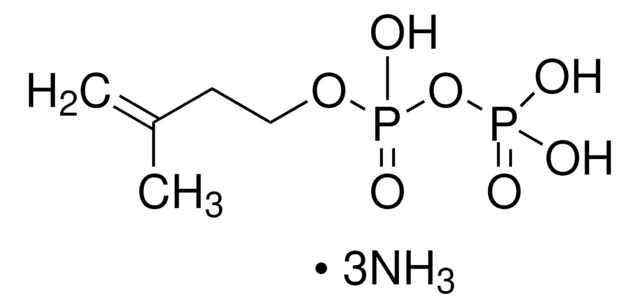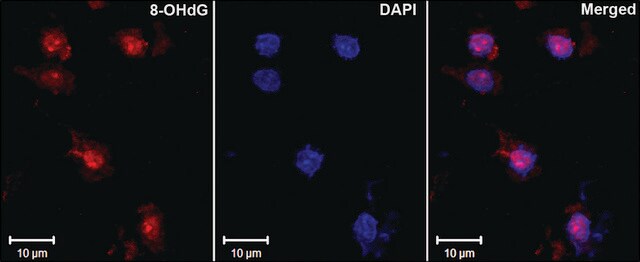G9282
Monoclonal Anti-Glutamate antibody produced in mouse
clone GLU-4, ascites fluid
About This Item
Productos recomendados
biological source
mouse
conjugate
unconjugated
antibody form
ascites fluid
antibody product type
primary antibodies
clone
GLU-4, monoclonal
contains
15 mM sodium azide
species reactivity
wide range
technique(s)
indirect ELISA: 1:10,000 using in situ prepared L-glutamate-glutaraldehyde-BSA conjugate for coating
isotype
IgG1
shipped in
dry ice
storage temp.
−20°C
target post-translational modification
unmodified
Gene Information
human ... GRM1(2911)
Specificity
Immunogen
Application
Immuno-electron microscopy (1 paper)
- immunolabeling of glutamate in the lamina of the Drosophila visual system
- immunocytochemistry at a working dilution of 1:20,000 to detect glutamate using heart and extrinsic nerves of stomatopod crustacean, Squilla oratoria
- immunofluorescent staining as a primary antibody at a working dilution of 1:1000 using cryosections of brains and embryos from mice
- use as a primary antibody to measure the glutamate release in synaptosome preparations
Biochem/physiol Actions
Disclaimer
¿No encuentra el producto adecuado?
Pruebe nuestro Herramienta de selección de productos.
Storage Class
10 - Combustible liquids
wgk_germany
WGK 3
flash_point_f
Not applicable
flash_point_c
Not applicable
Certificados de análisis (COA)
Busque Certificados de análisis (COA) introduciendo el número de lote del producto. Los números de lote se encuentran en la etiqueta del producto después de las palabras «Lot» o «Batch»
¿Ya tiene este producto?
Encuentre la documentación para los productos que ha comprado recientemente en la Biblioteca de documentos.
Nuestro equipo de científicos tiene experiencia en todas las áreas de investigación: Ciencias de la vida, Ciencia de los materiales, Síntesis química, Cromatografía, Analítica y muchas otras.
Póngase en contacto con el Servicio técnico








